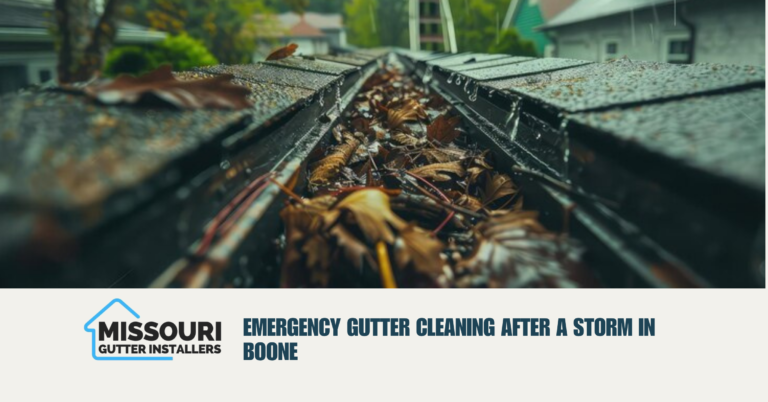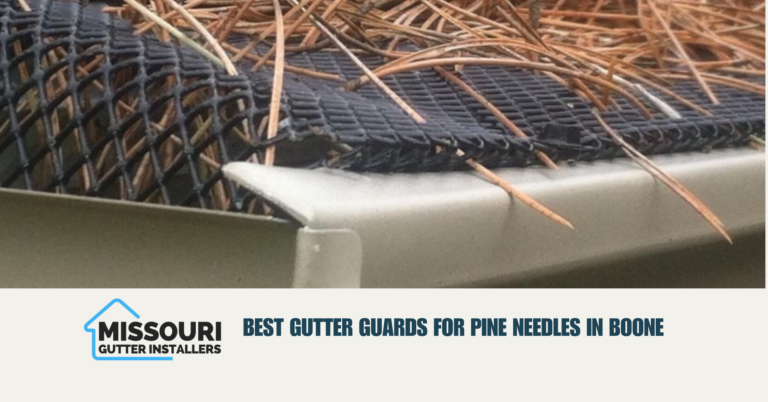Winter weather can be harsh on your home, and your gutters are no exception. As the temperatures drop and snow and ice begin to accumulate, gutters that are not properly prepared can lead to serious issues, including ice dams, water damage, and even structural damage to your roof and foundation. Preparing your gutters for winter is crucial in preventing these problems and ensuring that your home remains safe and protected throughout the cold season. In this article, we will discuss essential steps to take in preparing your gutters for winter weather.
1. Clean Your Gutters Thoroughly
One of the most important steps in preparing your gutters for winter is to clean them. Clogged gutters filled with leaves, twigs, and other debris prevent proper water flow and create the perfect environment for ice dams to form. When water can’t drain properly, it can freeze in the gutters, causing blockages and potentially damaging your roof and gutters.
What to Do:
- Use a ladder to safely access your gutters and remove all debris by hand or with a scoop.
- Consider using a hose to flush out any smaller debris that may be stuck in the gutter.
- If you’re uncomfortable cleaning your gutters yourself, consider hiring a professional to ensure the job is done safely and thoroughly.
2. Inspect for Damage
After cleaning your gutters, it’s essential to inspect them for any signs of damage. Winter weather can exacerbate minor gutter issues, and neglected damage can lead to serious problems when snow and ice accumulate.
What to Do:
- Check for any loose or sagging sections of the gutter that might need to be resecured.
- Look for cracks, holes, or rust that could prevent your gutters from performing effectively.
- Ensure that the downspouts are intact and free from obstructions. If any damage is found, make the necessary repairs to avoid further issues in the winter months.
3. Ensure Proper Gutter Pitch
Gutters are designed to have a slight slope to allow water to flow toward the downspouts. Over time, gutters can shift or become misaligned, which can cause water to pool in certain areas and increase the risk of ice dam formation. Ensuring that your gutters are properly pitched will help them function efficiently during the winter.
What to Do:
- Inspect your gutters to make sure that they have a slight slope toward the downspouts.
- If necessary, adjust the pitch by tightening or adjusting the gutter brackets to ensure proper water drainage.
4. Install Gutter Guards
Installing gutter guards is a smart way to prevent debris from accumulating in your gutters during the fall and winter months. Gutter guards can reduce the frequency of cleaning and help prevent clogs caused by leaves, twigs, and other debris, making it easier for your gutters to function during winter.
What to Do:
- Choose a gutter guard system that is designed to fit your gutters and provides adequate protection against debris buildup.
- Install the gutter guards according to the manufacturer’s instructions, ensuring that they are securely attached and allow for proper water flow.
5. Add Downspout Extensions
Downspouts direct the water from your gutters away from your home’s foundation, but if the water is not carried far enough away, it can pool near the foundation and potentially cause water damage. Adding downspout extensions is a simple and effective way to ensure that melted snow and ice are diverted away from your home.
What to Do:
- Install downspout extensions that direct water at least 3-4 feet away from the foundation of your home.
- Make sure the extensions are securely attached and free of obstructions to allow for proper water flow.
6. Prevent Ice Dams
Ice dams are a common winter problem that occurs when melted snow refreezes in the gutters and forms a dam, preventing water from draining properly. The trapped water can then seep under shingles and cause leaks inside your home. To prevent ice dams, it’s important to keep your gutters clear and ensure that heat loss from your roof is minimized.
What to Do:
- Ensure that your attic is properly insulated to prevent heat from escaping through the roof, which can cause snow to melt and refreeze in the gutters.
- Install roof and gutter heat cables to melt any snow or ice that accumulates in your gutters and downspouts.
- Keep your gutters clear of debris to ensure that water can flow freely through the system.
7. Check the Roof for Snow Accumulation
Although it’s primarily a roof-related issue, ensuring that snow does not accumulate in your gutters is important for preventing ice dams. Heavy snow buildup on your roof can melt and refreeze, creating dangerous ice formations along the edges of your roof and gutters.
What to Do:
- Regularly check your roof for snow buildup, especially after heavy snowfall.
- If snow accumulates in large amounts, consider using a roof rake to remove the snow safely. Avoid climbing on the roof to prevent accidents.
8. Install Heating Cables
Heating cables are an effective solution for preventing ice dams and keeping your gutters free of ice. These cables heat the gutters, allowing water to flow freely even when temperatures drop below freezing.
What to Do:
- Install self-regulating heating cables along your roof’s edge and inside the gutters.
- Ensure that the cables are correctly installed and plugged in so that they function effectively during the winter.
Conclusion
Preparing your gutters for winter weather is an essential part of home maintenance that can help prevent costly damage to your roof, foundation, and overall property. By cleaning your gutters, inspecting for damage, ensuring proper pitch, and taking preventive measures such as installing gutter guards and heating cables, you can protect your home from the harsh effects of winter weather. Taking the time to prepare your gutters now will save you money and headaches down the road and ensure that your home stays safe and dry throughout the cold months.





